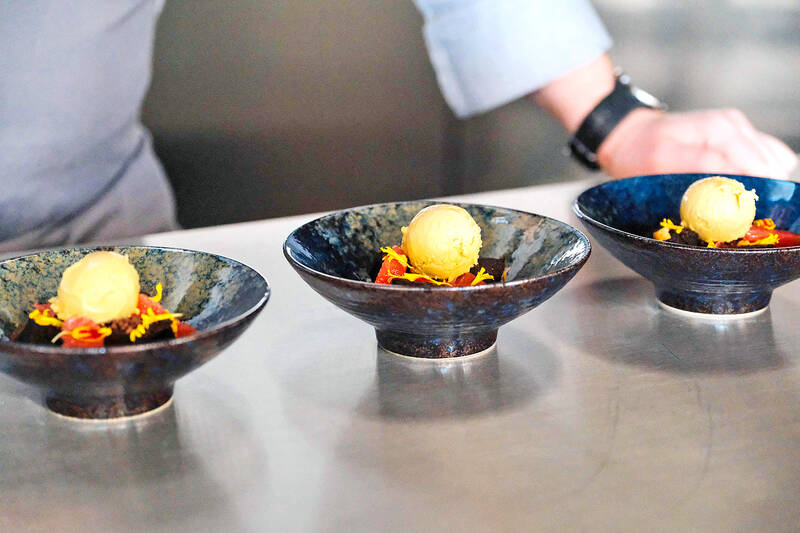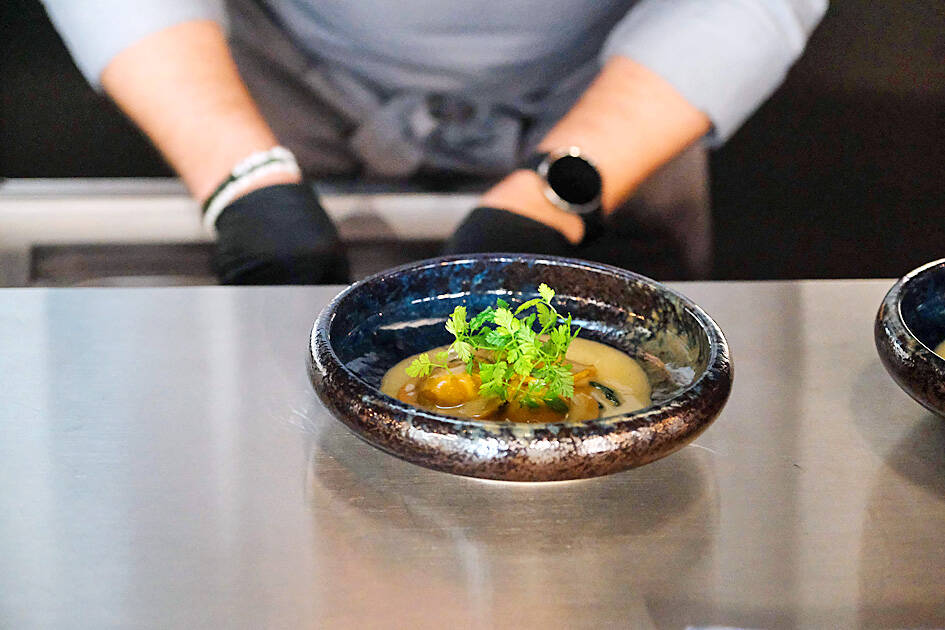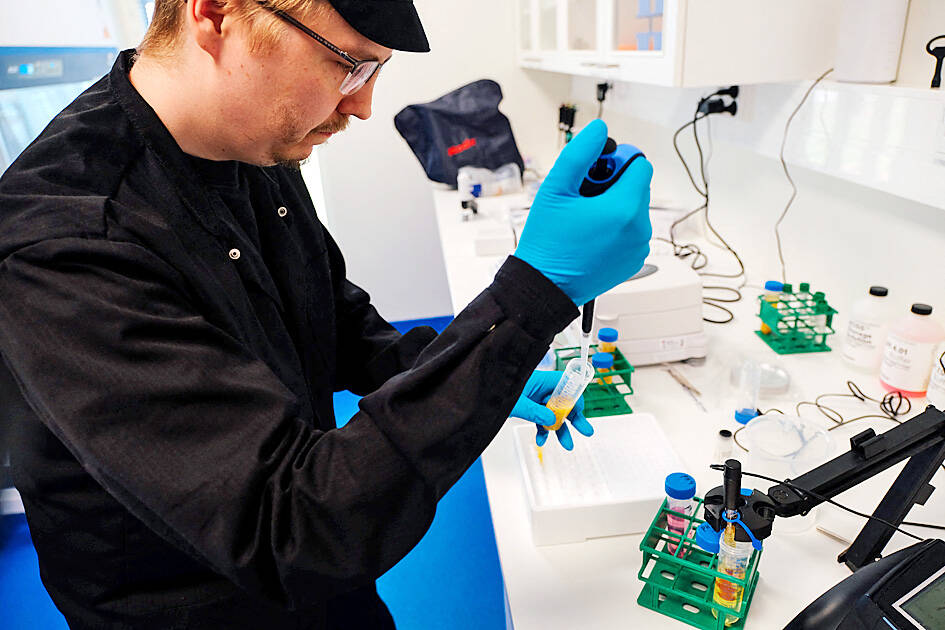The main aim of the small Finnish factory, which will employ around 40 people, is to “prove the scalability of the technology” so that it can attract needed investment while pending European regulatory approval.
Anna Kolkman/AFP, Vantaa, Finland
In a factory in Finland, the “farmer of the future” is feeding microorganisms air and electricity to create new food proteins, proving it is possible to produce proteins without using traditional farming methods.
The livestock industry is one of the main contributors to greenhouse gas emissions, a major cause of climate change. Cellular agriculture, which grows food and nutrients from cell cultures, is emerging as an environmentally friendly alternative to the livestock industry.
There has been a lot of buzz in recent years about lab-grown meat, eggs and milk, with scientists using animal cell cultures, but critics say the process is unnatural, highly processed, energy-intensive and costly.

Photo: AFP
But at Solar Foods' new factory outside Helsinki, scientists are using a new technique to grow proteins from cells using air and electricity.
By feeding microorganisms with carbon dioxide, hydrogen and several minerals, and running the process with electricity from renewable sources, the company has succeeded in producing a protein-rich powder that can be used as a substitute for milk or eggs.
“The main raw material for microorganisms is available from the air,” Solar Foods CEO Pasi Vainikka said during a tour of the company's new facility.

Photo: AFP
“We have begun producing the most sustainable protein in the world,” he added.
Founded in 2017 by Vainikka Pitkanen and Juha-Pekka Pitkanen, Solar Foods launched “the world's first factory that grows food from air” last month.
“Much of today's animal protein can actually be produced through cellular agriculture, and rewilding farmland can increase carbon storage,” Vainikka said, referring to the process by which forests and soils absorb and store carbon.

Photo: AFP
A 2021 scientific study showed that one kilogram of this new protein, called “solene”, produces 130 times less greenhouse gas emissions than the same amount of protein produced in EU beef production.
Vainikka walks through the factory's laboratory to the control room, where 12 people sit in front of computer screens monitoring the production process.
“They are our future farmers,” Vainikka said.
Transforming food production and consumption is at the heart of fighting the climate crisis and preventing biodiversity loss, said Emilia Nordlund, head of industrial biotechnology and food research at the VTT Technical Research Centre.
However, current projections indicate that meat consumption is expected to increase over the next few years.
“Industrial food production, and especially livestock production, is one of the largest sources of greenhouse gas emissions. [and] “Water resources are the biggest driver of biodiversity loss, eutrophication and freshwater exploitation,” she said.
New food production technologies can contribute to reducing emissions and “decentralizing and diversifying food production”, Nordlund said.
“But at the same time, we need to improve existing food production methods to make them more sustainable and resilient,” she added.
Fermentation techniques used to produce nutrients such as proteins have been around for decades.
However, the field has expanded significantly in recent years, with new technological solutions and research projects emerging all over the world.
Nordland said some of the most active startup hubs focused on cellular agriculture are in the United States, the United Kingdom, Germany, the Netherlands and Israel.
“We are at a critical juncture to see which start-ups will survive,” she said, adding that stagnant bureaucracy was slowing the uptake of cellular agriculture in the EU.
Wearing protective gear to prevent bacterial contamination inside the factory, Vainikka showed off huge steel tanks in a gleaming production hall.
“This is a 20,000-litre fermenter,” he said, adding that microorganisms grow in the tank when fed greenhouse gases.
The microbial liquid is continuously extracted from the tank and processed into a yellowish, protein-rich powder that is described as having a “nutty” and “creamy” flavor. “The fermenter produces the same amount of protein per day as 300 dairy cows or 50,000 egg-laying hens,” Vainikka said.
That equates to “five million protein meals per year,” he said.
For now, the main aim of the small Finnish factory, which will employ around 40 people, is to “prove the scalability of the technology” and is pending approval from European regulators before it can attract the needed investment.
The protein has been approved for sale in Singapore and is used in some restaurants to make ice cream, but is still awaiting classification as a food in the EU and the US.
To make a real difference, the goal would be to “build a factory 100 times the size of our current factory,” Vainikka said.
Comments are moderated. Please keep your comments relevant to the article. Comments containing insults, obscene language, personal attacks of any kind or promotion will be deleted and users will be banned. The final decision is at the discretion of Taipei Times.



